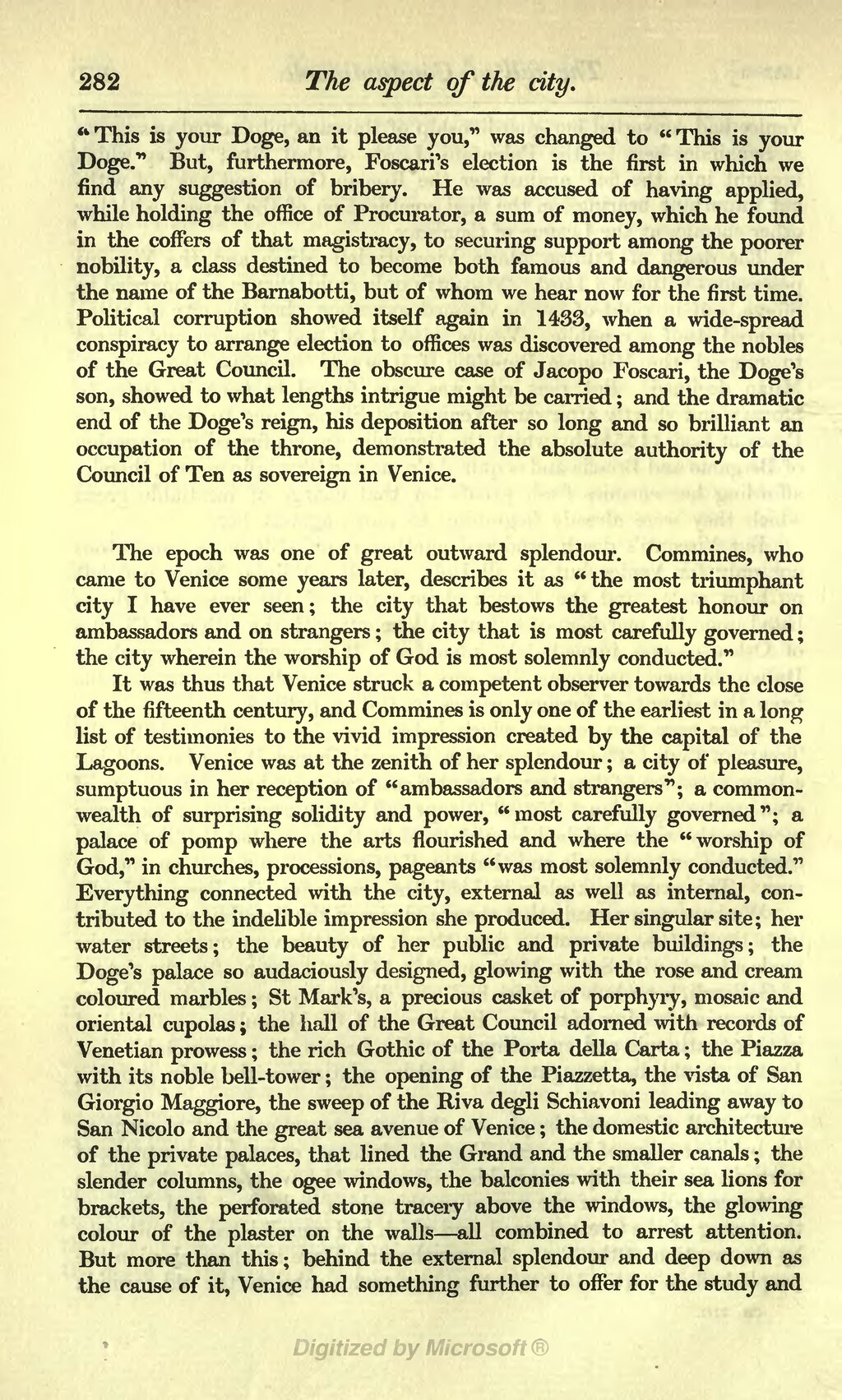This is your Doge, an it please you," was changed to "This is your Doge." But, furthermore, Foscari's election is the first in which we find any suggestion of bribery. He was accused of having applied, while holding the office of Procurator, a sum of money, which he found in the coffers of that magistracy, to securing support among the poorer nobility, a class destined to become both famous and dangerous under the name of the Barnabotti, but of whom we hear now for the first time. Political corruption showed itself again in 1433, when a wide-spread conspiracy to arrange election to offices was discovered among the nobles of the Great Council. The obscure case of Jacopo Foscari, the Doge's son, showed to what lengths intrigue might be carried; and the dramatic end of the Doge's reign, his deposition after so long and so brilliant an occupation of the throne, demonstrated the absolute authority of the Council of Ten as sovereign in Venice.
The epoch was one of great outward splendour. Commines, who came to Venice some years later, describes it as "the most triumphant city I have ever seen; the city that bestows the greatest honour on ambassadors and on strangers; the city that is most carefully governed; the city wherein the worship of God is most solemnly conducted."
It was thus that Venice struck a competent observer towards the close of the fifteenth century, and Commines is only one of the earliest in a long list of testimonies to the vivid impression created by the Capital of the Lagoons. Venice was at the zenith of her splendour; a city of pleasure, sumptuous in her reception of "ambassadors and strangers"; a commonwealth of surprising solidity and power, "most carefully governecT"; a palace of pomp where the arts flourished and where the "worship of God," in churches, processions, pageants "was most solemnly conducted." Everything connected with the city, external as well as internal, contributed to the indelible impression she produced. Her singular site; her water streets; the beauty of her public and private buildings; the Doge's palace so audaciously designed, glowing with the rose and cream coloured marbles; St Mark's, a precious casket of porphyry, mosaic and oriental cupolas; the Hall of the Great Council adorned with records of Venetian prowess; the rich Gothic of the Porta della Carta; the Piazza with its noble bell-tower; the opening of the Piazzetta, the vista of San Giorgio Maggiore, the sweep of the Riva degli Schiavoni leading away to San Nicolo and the great sea avenue of Venice; the domestic architecture of the private palaces, that lined the Grand and the smaller canals; the slender columns, the ogee windows, the balconies with their sea lions for brackets, the perforated stone tracery above the windows, the glowing colour of the plaster on the walls-all combined to arrest attention. But more than this; behind the external splendour and deep down as the cause of it, Venice had something further to offer for the study and
